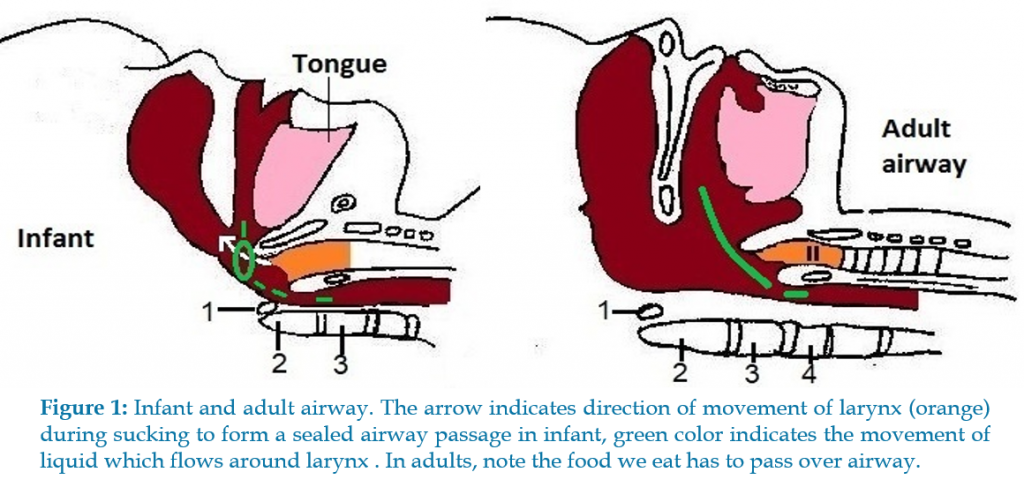Dr Gaurav Agnihotri
Evolutionary changes in both the vocal tract and the brain were necessary for humans’ remarkable gift of conversation.
In ‘On the Origin of Species’, Darwin noted “the strange fact that every particle of food and drink which we swallow has to pass over the orifice of the trachea, with some risk of falling into the lungs.” It is this unusual anatomy (not a feature of other mammals) that makes choking on food a leading cause of accidental death. This species-specific scenario is a due to mutations which crafted the human face, pharynx, and tongue so as to make it easier to speak and to correctly interpret the speech signals.
To better understand evolution of conversation, we must recollect the fascinating difference which exists in the anatomy of vocal tract in infants and adults. This difference in anatomy of vocal tract allows the infants to breathe and suckle liquids at the same time. At birth, the human tongue is flat in the mouth, as is the case for other mammals. The larynx, which rests atop the trachea, is anchored to the root of the tongue. As infants suckle, they raise the larynx to form a sealed passage from the nose to the lungs, allowing them to breathe while liquid flows around the larynx. Most mammalian species retain this morphology throughout life, which explains why cats or dogs can consume water while breathing.

The anatomical difference in airway anatomy between infants and adults is summarized below:
Access to Subscribers Only
Login / Register To Unlock The Content!
